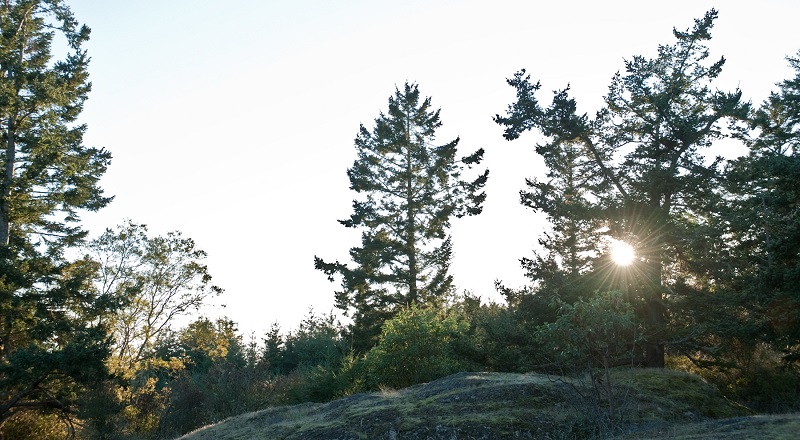Heironymous Conservation Easement
San Juan Island
Year Protected: 2000
Land Protected: 30 acres
Public Benefits: Forest, rocky balds, meadows, wetlands
Imagine for a moment the features that make the San Juan Islands distinctive. If what comes to mind is cool conifer forests, rocky outcrops with fragrant, colorful wildflowers, meadows and hedgerows filled with bird song, and marine and mountain views, you have conjured up some of the elements that Nancy and Dick Hieronymous have protected with a conservation easement on their San Juan Island property.
A number of years ago, after looking at many parcels for sale throughout the islands, Dick and Nancy returned to California with lots of pictures and the feeling that they had not yet found what they were looking for. When their real estate agent called with a new “must see” listing, they flew back immediately, and within hours knew this was it. “We were so excited with the land,” Dick recalls, “we did not even look at the house until the very end…the house was secondary to the feeling of being a part of this place.”
That feeling has been nurtured through Dick and Nancy’s care of the land and, with the conservation easement they put in place in 2000, will remain so in perpetuity. Under the terms of the agreement, one additional home may be built on the 30-acre property in an area carefully defined and sited to minimize disturbance. Subdivision and clear-cutting are prohibited. The easement provides for protection and enhancement of wildlife habitat, responsible forest management, and gardening.
“I love this property,” Nancy shares with enthusiasm. “I worked at a national park for many years and was well attuned to nature before we came here. When we first bought, I said, ‘ my goodness, we are buying our own park!’” Indeed, the array of wildlife that frequents the land seems to underscore its importance as a sanctuary. At the pond, deer, fox and raccoons are regular visitors. Raptors hunt over the meadow; woodpeckers are at work in the forest, and songbirds forage and nest in the mixed habitats throughout.
In thinking about the future of the land, Nancy and Dick know that their desire to preserve it for wildlife was a high priority. They also considered that their children, who will inherit the place, might be faced with having to sell it someday. Now they take comfort in knowing that, with the conservation easement, it will be sold to someone who will not destroy the property’s natural values.
Another advantage of this easement is that it is near neighboring property that has a conservation easement. “That was an additional motivation for us,” explains Nancy. “We like the idea of being part of a bigger network of preservation – that makes us happy.”

